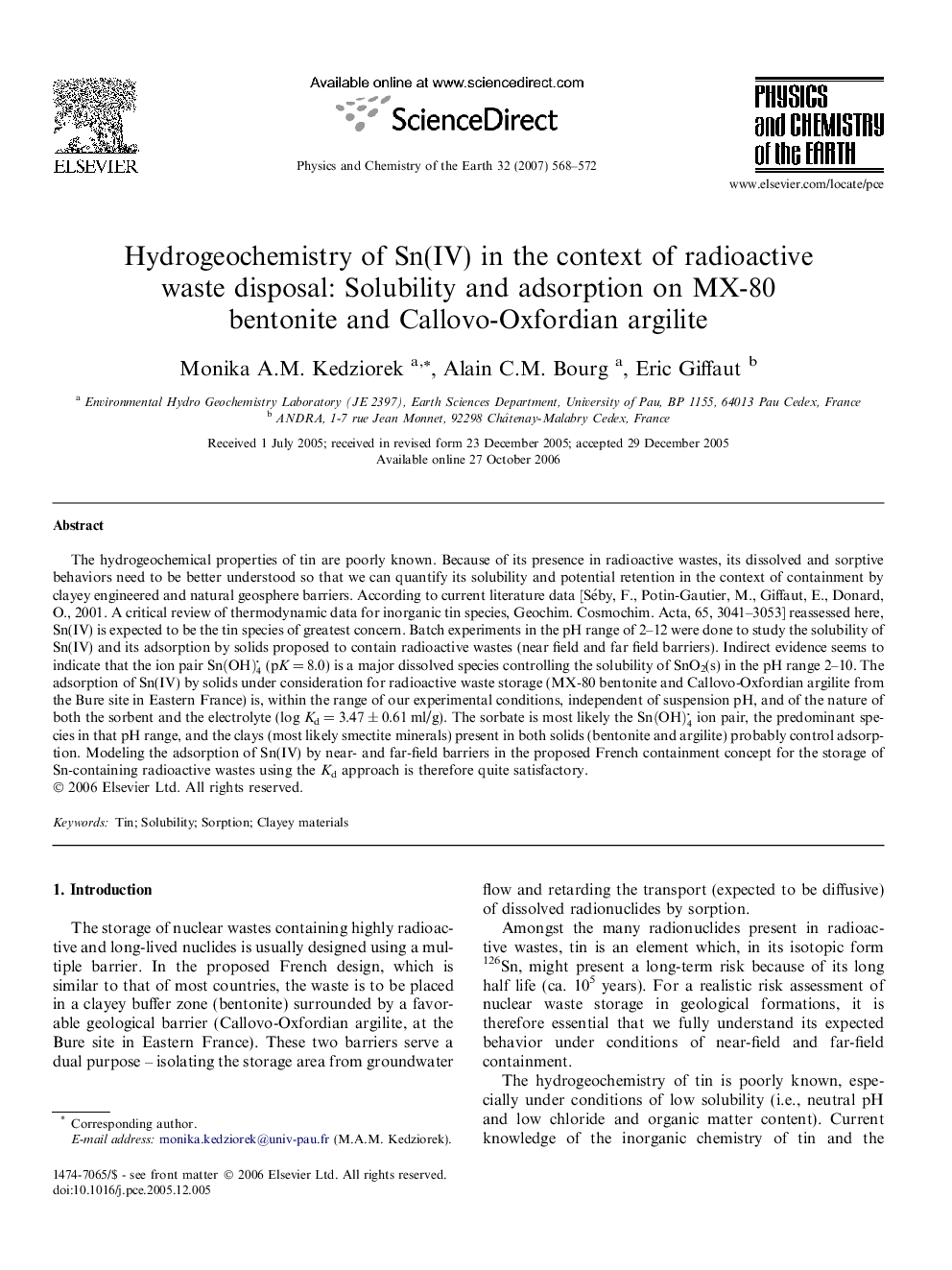| Article ID | Journal | Published Year | Pages | File Type |
|---|---|---|---|---|
| 4722106 | Physics and Chemistry of the Earth, Parts A/B/C | 2007 | 5 Pages |
Abstract
The hydrogeochemical properties of tin are poorly known. Because of its presence in radioactive wastes, its dissolved and sorptive behaviors need to be better understood so that we can quantify its solubility and potential retention in the context of containment by clayey engineered and natural geosphere barriers. According to current literature data [Séby, F., Potin-Gautier, M., Giffaut, E., Donard, O., 2001. A critical review of thermodynamic data for inorganic tin species, Geochim. Cosmochim. Acta, 65, 3041-3053] reassessed here, Sn(IV) is expected to be the tin species of greatest concern. Batch experiments in the pH range of 2-12 were done to study the solubility of Sn(IV) and its adsorption by solids proposed to contain radioactive wastes (near field and far field barriers). Indirect evidence seems to indicate that the ion pair Sn(OH)4 (pK = 8.0) is a major dissolved species controlling the solubility of SnO2(s) in the pH range 2-10. The adsorption of Sn(IV) by solids under consideration for radioactive waste storage (MX-80 bentonite and Callovo-Oxfordian argilite from the Bure site in Eastern France) is, within the range of our experimental conditions, independent of suspension pH, and of the nature of both the sorbent and the electrolyte (log Kd = 3.47 ± 0.61 ml/g). The sorbate is most likely the Sn(OH)4 ion pair, the predominant species in that pH range, and the clays (most likely smectite minerals) present in both solids (bentonite and argilite) probably control adsorption. Modeling the adsorption of Sn(IV) by near- and far-field barriers in the proposed French containment concept for the storage of Sn-containing radioactive wastes using the Kd approach is therefore quite satisfactory.
Keywords
Related Topics
Physical Sciences and Engineering
Earth and Planetary Sciences
Geochemistry and Petrology
Authors
Monika A.M. Kedziorek, Alain C.M. Bourg, Eric Giffaut,
